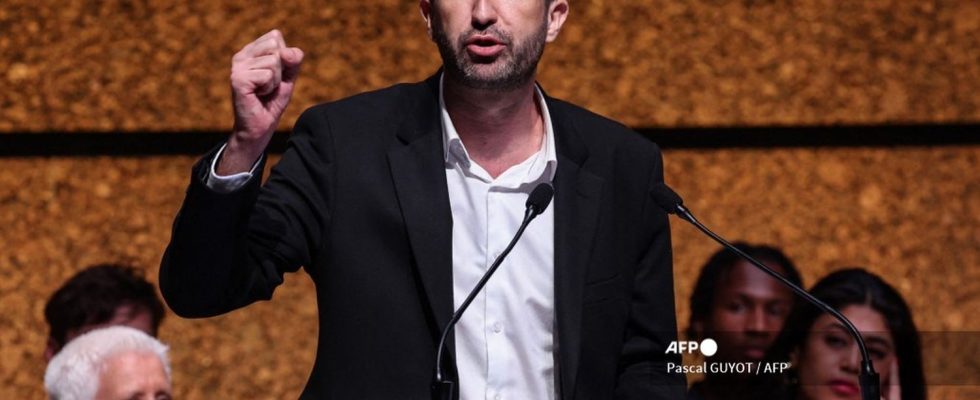The number of minors implicated in legal cases fell by a quarter between 2019 and 2022. This indicator is, however, imperfect for measuring the evolution of juvenile violence.
Published
Reading time: 3 min

Philippe Coopman, Shemseddine, Samara… All were victims of attacks, fatal for the first two, committed during the month of April. And most of the suspects in these cases are minors. Emmanuel Macron denounced “the emergence of ultraviolence in everyday life, among increasingly young citizens”. In this context, the Prime Minister, Gabriel Attal, delivered several announcements on April 18 in Viry-Châtillon (Essonne).
But is there a real increase in acts of violence committed by minors, as some politicians claim? This is not the opinion of La France insoumise (LFI) MP Manuel Bompard. Invited on the Franceinfo set, Monday April 22, he refuted this idea, supporting statistics: “If you take the figures from the Ministry of Justice, the number of minors implicated in legal cases was reduced by 25% between 2019 and 2022.”
By talking about people “implicated”, the elected official uses the legal definition of individuals involved in a dispute, during the time of an investigation, as the Public Life site points out. According to the Ministry of the Interior, this is “any person who has been interviewed by the police or the gendarmerie and against whom serious and consistent evidence is gathered, in the procedure transmitted to the public prosecutor’s office, attesting that he or she has committed or attempted to commit one or more offenses or crimes .” So, is Manuel Bompard saying it true or false?
A drop of 24% between 2019 and 2022
The figure mentioned by the LFI deputy is correct, since it appears in the statistical report of the Code of Criminal Justice for Minors, published on October 13, 2023 by the Ministry of Justice. “In 2022, 164,900 minors were implicated in cases closed by the public prosecutor’s office, i.e. 24% less than in 2019.details the document.
This decrease is difficult to explain. “It may be due to the Covid-19 epidemic, but the decline continued afterwards”, notes Nicolas Sallée, sociologist specializing in the juvenile justice system. Thomas Sauvadet, teacher-researcher in sociology specializing in youth gangs, offers another explanation. “We are observing a process of ghettoization of poor neighborhoods, which are moving away from justice and the police”, he says. According to him, the number of minors involved is decreasing because these neighborhoods are closing themselves off to institutions. “If residents do not file complaints, it is difficult to measure the violence of minors”, assures the sociologist. Nicolas Sallée believes that the number of minors involved does not reflect the evolution of violence among young people.
“This indicator reflects the activity of judicial institutions more than the criminal activities of minors. It only measures the way in which the police, then the justice system, respond to delinquency.”
Nicolas Sallée, sociologist specializing in the juvenile justice systemat franceinfo
What response does justice provide to this delinquency? On September 30, 2021, the Juvenile Criminal Justice Code came into force, reforming the order of February 2, 1945 relating to delinquent children. This code aims to speed up procedures and improve the care of juvenile offenders. The justice system being more active, if violence had increased among minors, the number of suspects could have also increased. However, it has decreased.
A development difficult to assess
By the very admission of the Ministry of the Interior, cited by a senatorial report, it is impossible to know reliably the overall evolution of the minors involved over the last thirty years.. Beyond the figures, measuring violence by minors remains an arduous task, concludes Nicolas Sallée: “It doesn’t just come down to the number of trials or defendants.” It is also necessary to distinguish delinquency and violence. Concretely, a minor can be accused of using narcotics, which constitutes an offense, but not violence.
Furthermore, according to Thomas Sauvadet, we are witnessing a transformation in the violence of minors. “Social networks are a sounding board for violence: young people film attacks, broadcast them on social networks, set meeting pointshe explains. The appearance of networks has generated violence that did not exist before.”
